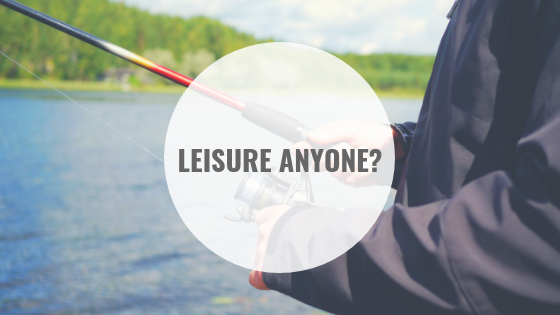Julie Entwistle, MBA, BHSc (OT), BSc (Health / Gerontology)
In recognition of Brain Injury Awareness month, I thought it would be fitting to start at the very beginning. PREVENTION. Really, it is the best medicine. For now, let’s forget about the symptoms of brain injury and its’ impact on work, home, school, and quality of life. Let’s not talk about how it is assessed and treated. Instead, let’s focus on trying to stop it from happening in the first place.
But even before that, we need to know what we are dealing with. It is well known that brain Injury is the leading cause of death and disability worldwide. In Canada, Traumatic Brain Injury (TBI) is more common than breast cancer, spinal cord injury, HIV/AIDS, and multiple sclerosis (MS) combined. There are approximately 18,000 TBI hospitalizations annually. In the province of Ontario, 25% of the two million people diagnosed with a neurological condition have suffered from a TBI. In 2000-2001 brain injuries accounted for $151.7-million in direct costs to Canadians (1).
By way of distribution, TBI is most common in children (0-19) at 30%, followed by seniors (60+) at 29%. In kids, falls are the most common cause followed by motor vehicle accidents and then sports. In adults, motor vehicle accidents cause the most TBI’s, and in seniors the causes include falls (76%) followed by car accidents (2).
Knowing the causes helps to look at how we can engage in preventative strategies. As an occupational therapist with a background in health promotion, a parent of four, and athlete, here are my thoughts:
Falls
Kids fall all the time, so how can we prevent that? Well, there is a difference between a child falling when walking, running or jumping, versus falling from, say, a shopping cart, off of a playground structure, or from a tree they tried to climb. Falls from bikes, skateboards and scooters are going to happen – and a helmet can mean the difference between a head injury and not. The bottom line is that falls in kids are best prevented by proper adult supervision. Yes, it is that simple.
In seniors, falls take on a different form. They are not from carefree or reckless behavior, but often happen when someone is just trying to go about their day by having a shower, coming down the stairs, or taking a leisurely walk. Seniors need to be attuned to the physical, balance and vision changes they are experiencing as they age, and need to consider the importance of anti-slip mats in the bathroom, removing scatter mats, installing grab bars or railings, and the benefits of a walking stick or cane when outdoors. Seniors need to engage in regular exercise and activity to maintain bone density, mobility and intact balance. They have to be very careful when living with pets or when trying to negotiate places that are cluttered or dark. Awareness of declining abilities is the first key to addressing these properly such that a prevention plan can be developed that will ultimately improve safety and reduce the risks. Note that the services of an occupational therapist can be pivotal in creating this safety plan.
Motor Vehicle Accidents
Like falls, despite our best intentions, these can and do happen. The issue here is trying to minimize the risk and optimize the outcome. Safe drivers are attentive, undistracted, and alert. They travel at safe speeds, approach intersections with caution, stop behind the line, pass when appropriate, and recognize that rushing to get somewhere on time is useless if it means you never get there at all. Safe drivers don’t text or hold a phone to their ear, don’t eat a hamburger and steer with their knees, and don’t drive when tired. If you are one of these drivers you are going to increase your chances of avoiding a collision, and lower your chances of being the cause. Unfortunately, however, not everyone is a safe driver. So, all the rest of us can do is wear our seat belt, buy a car with a good safety rating, make sure everyone in the car is buckled properly, make sure the headrest is at a proper height, put loose belongings in the trunk (I know of a child who got a head injury from a flying jar of pickles that escaped the grocery bag during a collision), and follow the rules for child seats.
Sports
I am an avid athlete and have pretty much played or tried every sport. There are very few sports I dislike and I honestly feel that sports can be the most positive and influential outlet for young people, and one of the most engaging and social outlets for adults. The issue is that sports seem to be becoming more and more competitive, kids and adults are getting bigger and stronger, and the culture of some sports has changed from friendly competition to all-out war. Preventing head injury in sport can include outfitting your kids with proper equipment (many hockey parents spend more on a stick than a helmet), ensuring they are playing at their level, monitoring the coaching influence and team culture to make sure this is appropriate, and my favorite is from the book “The Secrets of Successful Families” and includes that the only job of a parent in organized sport is to “shut up and cheer”. No parent should be on the sidelines encouraging reckless, mean or harmful behavior. The results can be devastating. And if you are concerned about your child’s risk of head injury in sport, know that there are many other sports that reduce the risk but are equally as challenging, competitive, fun and have the same physical, cognitive and developmental benefits.
So, let’s start our recognition of Brain Injury Awareness Month by practicing prevention. It does not have to be easier said than done.
(1) Brain Injury Association of Canada
(2) Canadian Institute of Health Information


